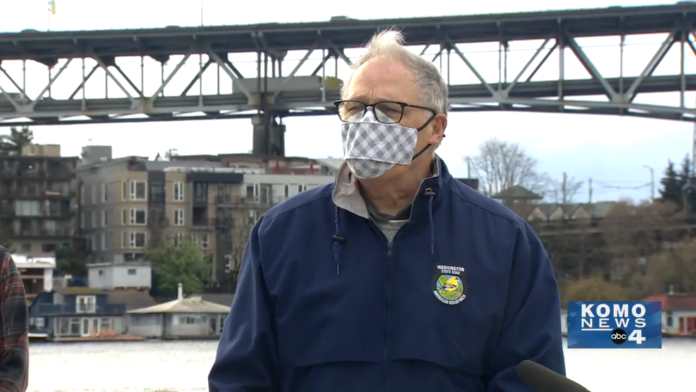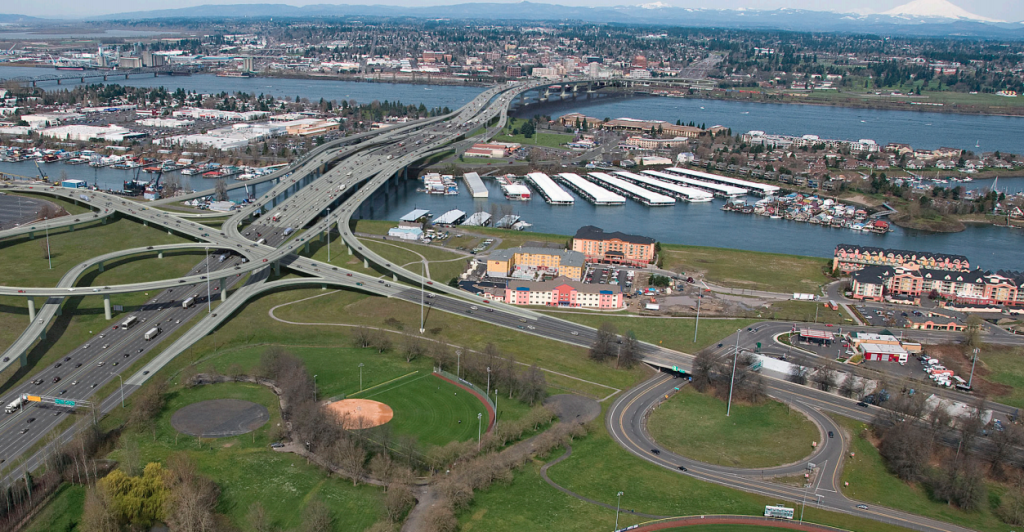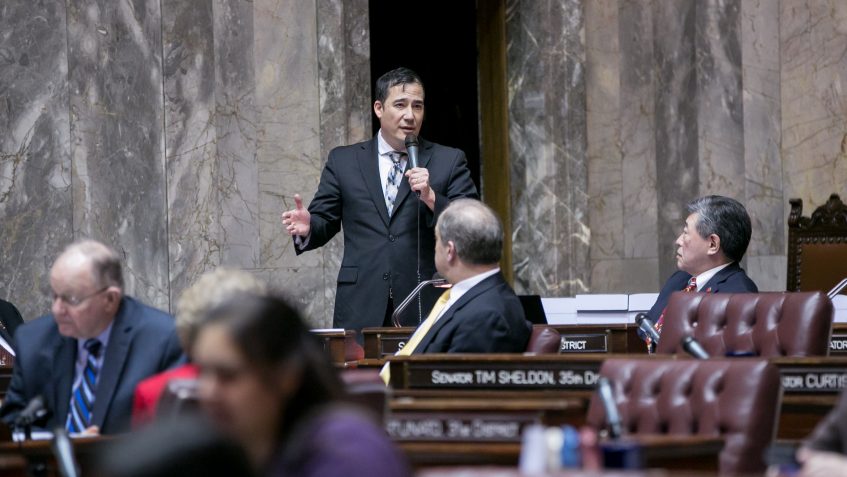
On March 5th, Governor Jay Inslee stood in front of the I-5 Ship Canal Bridge in Seattle and urged the state legislature to pass a transportation package this session. Just what should be in the package is less certain, but we at The Urbanist wanted to join the clarion call led by the Disability Mobility Initiative and the Front and Centered Coalition: Washington State must cease spending on new highways. No excuses.
The more pressing needs are around making our roads safe for people walking, rolling, and biking and boosting transit service to lower climate emissions. We’re not doing enough on climate; Washington state’s emissions have continued to climb, with transportation the leading sector. While climate was mentioned, King County Councilmember Girmay Zahilay was the only speaker at the press conference to focus on transit, which, unlike highway widening, actually represents a way out of our climate death spiral.
Different proposals at the state legislature have varied in how much they emphasize highway expansion versus transit, road safety, and climate action. None completely nail it, but the Forward Washington package in particular represents the wrong approach. The project list is heavily weighted toward highway widening.
Governor Inslee emphasized a maintenance-first approach, but he also highlighted the need for highway expansion projects like the I-5 Columbia River Crossing and US-2 Trestle.
“I’m confident when we pass a package we will have maintenance all across the state of Washington, and obviously maintenance is not the only thing we need,” Inslee said. “We are a growing state. We are a robust state, and we are a building state. We need to build projects. We need to rebuild the bridge and have a new bridge on the I-5 over Columbia. We know the US-2 Trestle, a favorite project of Senator Hobbs who is now galvanizing some transportation efforts in the Senate… So we need to build.”
Likewise, when we hosted Roger Millar, who heads the Washington State Department of Transportation (WSDOT), at our monthly meetup this month, he defended some of his agency’s planned expansion projects (notably the Puget Sound Gateway project extending SR-167 and SR-509) while also stressing maintenance first and acknowledging the need for action on safety.
But what does maintenance first mean if billions and billions more dollars are invested in highway expansion? It’s time for Washington state to quit highway widening cold turkey rather than continue to feed its addiction while talking a big game about getting sober around climate and road safety.
Admittedly, this is a lot easier said than done. The highway lobby is very effective at promoting their projects and spreading highway myths, and they have been laying the groundwork for decades on some of the proposals. Drawing the boundary between maintenance and preservation on one hand and expansion on the other can be a little murky — at least if you don’t read The Urbanist. However, adding lanes and interchanges is clearly an expansion of highway infrastructure even if it’s dressed up with tolling or carpool lanes.
For example, while the Columbia River Crossing has been presented as an earthquake readiness project this time around, it in fact remains a sprawl-inducing supersizing of I-5 in Clark County with some greenwashing elements. The era of letting highway expansion megaprojects slide in exchange for a new sidewalk, trail, or park should be over.

The US-2 Trestle has been presented as solving a troublesome bottleneck and improving transit by adding a high occupancy transit (HOT) lane. However, WSDOT has admitted widening the trestle would likely move the bottleneck onto I-5. That’s not much benefit for a multi-billion-dollar project.
Three packages are circulating in the Washington State Legislature — two in the senate and one in the house. The House package is the most promising with $5 billion for transit proposed. On the flip side, Senator Steve Hobbs’ Forward Washington lavishes the most spending on highways and the least on safety while flirting with a bike tax, continuing his misguided approach from previous sessions. Senator Rebecca Saldaña’s Evergreen Plan is a big improvement, spending less on highway expansion and more on transit and street safety.
We firmly believe that what’s in the package matters. Any old plan won’t do. Until our state can meet its climate goals and its Vision Zero pledge to end traffic deaths, adding more highway capacity would only be doubling down on a failing strategy and welcoming more carnage.
The Urbanist Editorial Board consists of Natalie Bicknell, Stephen Fesler, Shaun Kuo, Ryan Packer, and Doug Trumm.
The Urbanist was founded in 2014 to examine and influence urban policies. We believe cities provide unique opportunities for addressing many of the most challenging social, environmental, and economic problems. We serve as a resource for promoting and disseminating ideas, creating community, increasing political participation, and improving the places we live.


